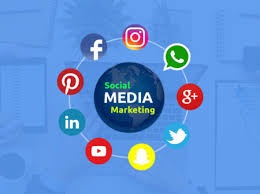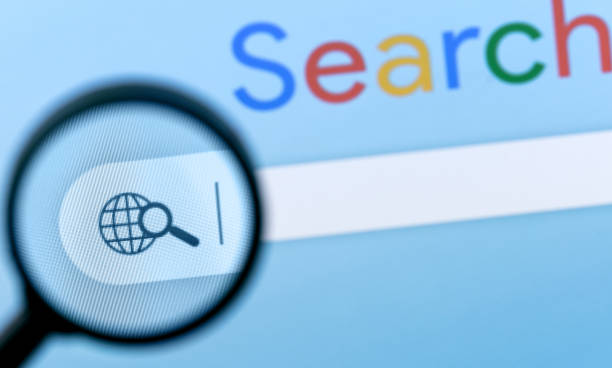What Is Social Media Marketing (SMM)?
The term “social media marketing” (SMM) refers to the usage of Social media and websites to promote products and services offered by a company. The use of social marketing via media marketing allows companies to interact with their existing customers and connect with new customers while enabling them to advertise their ideal brand and mission or tone. Marketing on social media is built specifically for data analytics tools that allow marketers to measure the effectiveness of their marketing efforts.
The decisions for marketing in the e-commerce space are challenging. Advertising and search engine optimization, and social media content marketing are all about sending messages to an audience. But, depending on the channel marketing, the marketer could not control the transmission, the distribution, or even the people who receive it.
So a classification model for media channels can assist marketers in holistically considering communications. One of these models could be PESO which stands for paid, earned, owned, shared, and delivered.
When you organize strategies into earned, paid shared, owned, and paid media, you will know who is creating the promotions, the owner of the target audience for the rise, and who is in charge of the distribution.
PESO Vs. PEO
Social platforms on the internet are an integral component of “shared” integrated marketing.
However, social-minded marketers disagree with the “shared” aspect, preferring three different media categories over PESO’s four distinctions and putting the platforms with shared media — e.g., Facebook, Twitter, Instagram, YouTube, TikTok — into the “owned” category.
One could argue that the reduction of PESO to PEO is still an excellent way to achieve the objective of helping people think about the best ways to communicate. It’s not a good idea to think that any business owns the content on its social networks, and it’s also harmful when a company is putting too much emphasis on a channel that’s not under its control.
Point of Distinction
When marketers employ the PESO model, it is crucial to consider the contents, target audience, and distribution. These three factors differentiate media channels and assist in determining how ads and content interact.
In the above table, as it illustrates, “your business creates” the content for owned media as well as shared media. In both instances, “your business” worked to build the target audience. However, you do not have control over the actions of social media platforms with their content. Likewise, even with growing followers, it cannot effectively transfer this audience to other channels.
In 2017, I wrote, “Shared media describes the content that your company creates which is then distributed to an audience that your company has created on a platform owned by another person owns or controls.”
This control is the primary difference and is why social isn’t “owned” media.
Account Suspensions
To prove that businesses do not control their social media platforms, you should consider suspending accounts.
Each social media platform reserves the right to ban or block accounts. Specific policies may differ, but any company can create a massive amount of content, gain thousands of followers, and suddenly be denied access to its account, the content, and followers.
This is a daily occurrence for small-sized businesses.
Removal of Content
Social media platforms can take down specific posts. This is common practice with YouTube creators, as an example.
If a YouTube creator criticises content, it’s typical for the party charged for submitting a copyright complaint to immediately suspend the critique and require the creator to engage in an arbitration proceeding.
Businesses face suspensions, too. The fact that YouTube and other platforms also have limitations on content and frequently individual takedown posts is proof that social media isn’t “owned” media within the conventional sense.
Creator Economy
The creator economy and its so-called”creator” economy show that social isn’t something either individuals or companies can “own.”
Creators can make money from their content via a particular channel; they aren’t controlling their audience or distributing their work. YouTube does. And TikTok does. Or Instagram does as well, and so on.
In the year 2019, for instance, many YouTube creators expressed displeasure about the company’s attempts to comply with the U.S. Children’s Online Privacy Protection Act, which negatively affected creators’ income. YouTube might restrict advertising and, consequently, revenue sharing for the content it believes to be “made to be enjoyed by children,” whatever content creators had in mind.
In the past, YouTube creators were worried about the possibility that Google might let its agreement in partnership with Roku expire, which would reduce views, advertising, and revenue for a variety of channels.
Creators frequently encourage their audience to sign up for newsletters via email or community groups to combat this issue. If they want to increase their revenue, creators need to get out of the social media platform. Another reason is that social media is not “owned.”
MySpace
Another reason not to classify social media platforms under the “owned” or “owned” class may diminish popularity. MySpace and the now-defunct Friendster were both significant Facebook rivals at their heights. There’s no more.
There is no guarantee Facebook, Instagram, or any other social network will inevitably be around in the next five or ten years. Certain legislative bodies and web3 advocacy groups seek to dismantle and replace these sites.
Not In the Ownership of
Suppose companies begin to believe they control the social media audience and content like they have blogs or an email list. In that case, they risk losing control over their content and customer relationships.
The PESO model is designed to assist marketers in thinking about communication holistically and utilizing the four channels effectively.
Social media is undoubtedly an essential component of the overall mix, but the content of a business should be available within the company’s website(s). The relationship with customers must be direct, not through a proxy service such as Facebook or TikTok.














